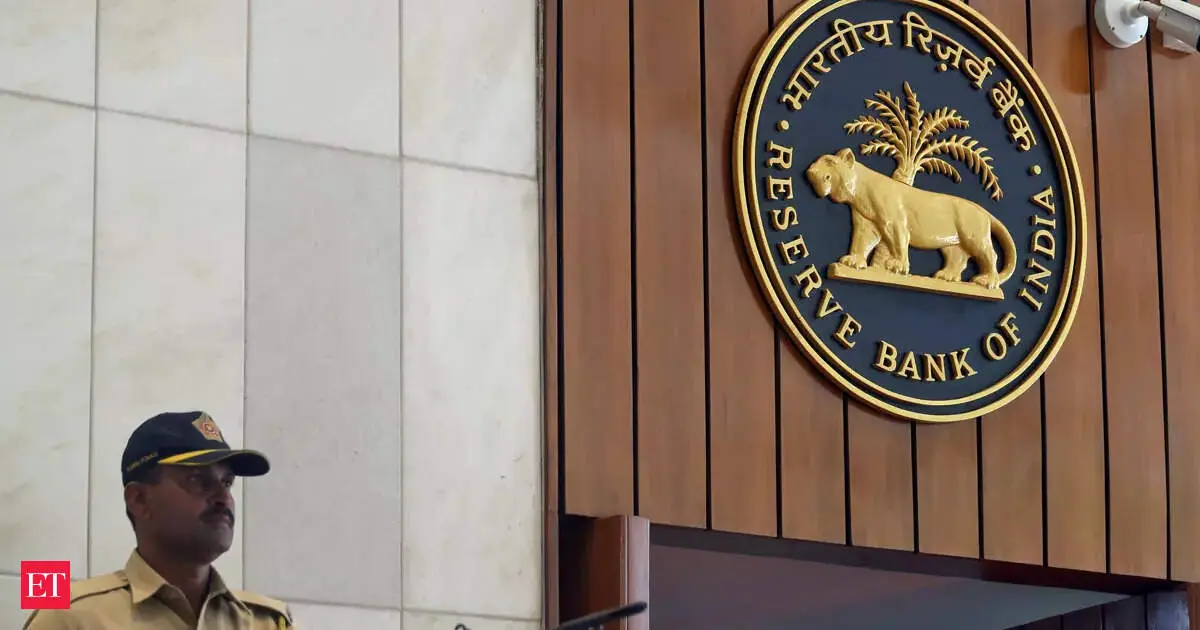New Delhi: The Federation of Indian Export Organisations (FIEO) is urging the Reserve Bank of India (RBI) for urgent intervention to address significant challenges in the export sector. These challenges include rising tariffs, input cost inflation, and demand volatility, which are straining exporters. FIEO has called for flexible credit solutions, moratoriums on repayments, and dedicated credit schemes to ensure the banking sector supports export sustainability and the broader Indian economy.
- The Export Sector’s Current Struggles
- Proposed Solutions for Financial Stability
- A Closer Look at Export Credit Dynamics
- Administrative Changes Needed to Reduce Compliance Burdens
- Looking Ahead: Strengthening the Banking Sector’s Role
- Bankerpedia’s Insight 💡
- What Does This Mean for Me? 🤔
- Research References 📚
- Loved our Research? ❤️
The Export Sector’s Current Struggles
The export sector in India is facing an uphill battle, with various pressures impacting its stability and growth. Rising tariffs and input cost inflation are not just minor hurdles; they pose significant risks to exporters who are already grappling with volatile demand in international markets. In a recent meeting with the Reserve Bank of India, the Federation of Indian Export Organisation (FIEO) highlighted these challenges and requested immediate measures to alleviate pressures faced by exporters.
“Exporters are currently battling compounded challenges, including rising tariffs, input cost inflation, and demand volatility. In such times, banks must step in not just as financial enablers but as long-term partners in export sustainability. We request RBI’s guidance to ensure banks adopt a proactive and compassionate posture,” stated FIEO in its discussions with the RBI.
Proposed Solutions for Financial Stability
FIEO has put forward a series of constructive proposals aimed at stabilizing the export sector. One critical recommendation is to extend the pre-shipment credit period. “To ensure continuity of operations, we request an extension in the pre-shipment credit period. This will help exporters manage their working capital effectively, meet quality standards, and uphold contractual obligations without being financially strained due to delays outside their control,” the federation stated.
Furthermore, the call for a 12-month moratorium on both principal and interest repayments reflects the urgent need for breathing space. “This breathing space will allow exporters to recalibrate operations, recover receivables, and reorient their strategies to adapt to new market realities,” noted an exporter, emphasizing the importance of maintaining financial health amidst market inconsistencies.
In addition to these immediate measures, FIEO has suggested implementing a government-backed, collateral-free credit scheme tailored specifically for exporters, particularly small and medium enterprises (SMEs). This initiative echoes the Emergency Credit Line Guarantee Scheme (ECLGS) that had proven vital during the pandemic and could lead to significant improvements in accessing finance.
A Closer Look at Export Credit Dynamics
Despite witnessing robust export growth of over 15% in rupee terms from 2021-22 to 2023-24, net outstanding export credit has alarmingly declined by more than 5% between March 2022 and March 2024. While export credit is classified under priority sector lending, FIEO points out that the actual flow remains woefully inadequate.
To tackle these issues, FIEO proposes earmarking a designated sub-target of 2-2.5% within the overall 40% priority sector lending target specifically for export credit. Such measures are essential not only for sustaining exporters but also for fortifying the broader Indian economy.
| Data Point | 2021-22 | 2023-24 | Change (%) |
|---|---|---|---|
| Net Outstanding Export Credit | ₹X Crores | ₹Y Crores | -5% |
| Export Growth | ₹A Crores | ₹B Crores | +15% |
Administrative Changes Needed to Reduce Compliance Burdens
FIEO has also raised concerns about discrepancies within the shipping bill realization data across various platforms. This inconsistency often leads to exporters receiving Show Cause Notices (SCNs) or being asked to refund drawbacks due to mismatches.
“We request RBI to issue an administrative instruction designating EDPMS (Export Data Processing and Monitoring System) as the authoritative source for realization monitoring,” FIEO emphasized. This step would alleviate the compliance burdens faced by exporters and minimize the risks of financial repercussions stemming from data discrepancies.
Looking Ahead: Strengthening the Banking Sector’s Role
As the Indian economy continues to emerge from the shadows of global economic uncertainties, the role of the banking sector becomes even more crucial. According to the Reserve Bank of India, the strategic intervention in export financing can stimulate not just individual businesses, but also contribute significantly to the overall economic health of the country. The RBI’s recent analyses suggest that maintaining a conducive environment for exporters can enhance India’s global competitiveness and drive innovation.
“To adapt to new market realities, the banking sector must take on a more proactive role,” added FIEO. If banks can truly position themselves as long-term partners, the export sector may not only weather the current storm but thrive in the future.
In conclusion, as challenges mount for the export sector, it is imperative for both the RBI and banks to act decisively. By providing tailored financial solutions and reducing administrative burdens, they can support exporters in maintaining their vital role in the Indian economy.
Bankerpedia’s Insight 💡
The FIEO’s call for RBI intervention highlights the urgent need for adaptive strategies within India’s banking sector to support exporters facing rising costs and demand fluctuations. By advocating for flexible credit solutions and a temporary repayment moratorium, the FIEO aims to stabilize the export ecosystem, vital for India’s economic growth. Banks must embrace their role as strategic partners rather than mere lenders. For readers, understanding these developments is crucial as they may influence financing options and market strategies within the export landscape. Active engagement in these dialogues can foster resilience in times of uncertainty.
What Does This Mean for Me? 🤔
- Salaried Person → Possible salary adjustments due to export sector challenges.
- Business Owner → Increased financial strain and need for proactive banking support.
- Student → Export challenges may limit job opportunities for students.
- Self-employed → Increased credit access can stabilize self-employed export operations.
- Homemaker → Possible rise in prices for household goods and groceries.
- Retiree / Senior Citizen → Potential inflation impacting cost of living increases for seniors.
- Job Seeker → Export challenges may reduce job opportunities in export sector.
- Farmer / Rural Citizen → Increased costs and credit difficulties hinder farmers’ exports.
Research References 📚
- economictimes.indiatimes.com
- RBI
- SEBI
- Ministry of Finance
- NABARD
- Department of Financial Services (DFS)
- IMF
- World Bank
Loved our Research? ❤️
Bankerpedia turns financial confusion into clarity!
Subscribe to our YouTube channel for unbiased insights, financial literacy & practical banking wisdom.










